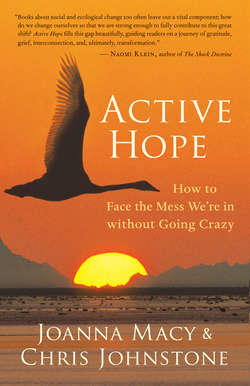Читать книгу Active Hope - Joanna Macy - Страница 20
На сайте Литреса книга снята с продажи.
Economic Decline
ОглавлениеThe economic crisis that erupted in 2008 saw not only the collapse of financial institutions but also rising prices, unemployment, home foreclosures, and food riots in many parts of our world. Just a few years earlier, at the beginning of 2005, the global economy was thought of as booming. With house prices rising fast in the United States, property was considered a “safe” investment. There was money to be made in the mortgage business, and loans were freely given, even to those with poor credit ratings. But this boom grew into a bubble that eventually burst. An economist might view this as part of a boom-and-bust cycle. Another phrase we’d use to describe what happened is overshoot and collapse. Here’s why.
When something moves beyond the point at which it can be sustained, we call this overshoot. To restore balance, we need to notice and correct such overextension. If we don’t, and the system keeps pushing for more and more, that system can only go so far before reaching a point of breakdown and collapse. The housing market couldn’t keep growing indefinitely; neither can the economy.
After years of unsustainable growth, the bubble eventually burst in the US housing market, and in 2006 and 2007 property prices collapsed. Since so many financial institutions were invested in the mortgage industry, the crisis affected the entire economy. Like a row of dominoes, financial giants fell one after the other. Governments borrowed huge amounts of money to prop up ailing institutions that had gone first into overshoot and then into collapse. But what if the whole economic system is in overshoot mode and is now unraveling as a consequence?
The bubble of continuing economic growth depends on an ever-increasing input of resources and generates ever-higher levels of toxic waste. The more we push beyond sustainable limits for both of these, the more the unraveling occurs.
